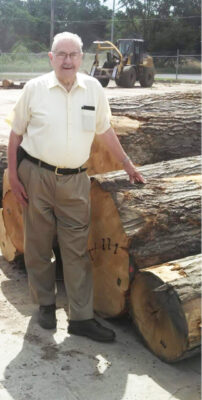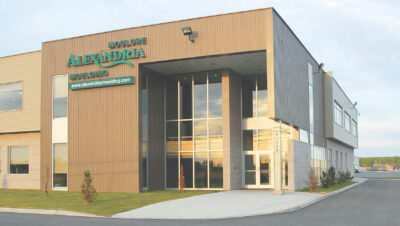With summer behind us, and the Labor Day holiday over, businesses are slowly gearing up for the fall and winter seasons. Businesses are planning their purchasing schedules in advance for their anticipated production needs. With demand being down for hardwood finished goods, they must be vigilant and creative to stay in business and make a profit. Also, the ongoing challenges of finding skilled trades people remains a challenge for some. For many, remaining cautiously optimistic is key through these challenging times.
Ash demand is down both on domestic and international markets. There is little Ash consumption at this time by sawmills nor by secondary manufacturers or wholesalers; supply being in line with demand. Basswood demand has also seen a decrease this year, as the window blinds and shutters manufacturers have reduced using this species to produce their products, as has the moulding sector.
The regionally important Hard Maple remains a steady bet. Although there has been a noticeable decrease in demand from the cabinet manufacturing sector in the last several months, Green FAS and 1F and kiln-dried FAS continue to sell well with prices being stable. Markets for green and kiln-dried upper grades Soft Maple are seeing more activity, while markets for No. 2A are quiet for Soft Maple. Some contacts note that sales of No. 1 Common is also cooling off. Supplies of the upper grades are not keeping pace with demand, but supplies of common grades are ample to meet the needs.
Cherry markets have also dropped, and especially to China, the demand there has dropped drastically as well. Therefore, sawmills have reduced their purchases of this species, and wholesalers are also avoiding green lumber.
Hickory, noted contacts, is not doing well either. Sawmills avoided it at the end of summer, and were avoiding this species as it was hard to sell green lumber production. Kiln-dried inventories were rising, including the thicker items that were usually hard to acquire.
Red Oak demand has also seen a slight decrease in recent months. Wholesalers and distributors are cautious in their purchases. Contacts noted that demand for kiln-dried No. 1 Common and Better Red Oak is even with supply. Exports have increased slightly as well, they added.
With stave and barrel operations cutting back on their purchases over the summer, sawmills were able to obtain more high quality White Oak logs. This slight gain is easing pressure for the No. 1 Common and Better grades, commented contacts. Residential flooring manufacturers are stocking up a bit more, however, business is not strong for all grades of White Oak strip flooring. Kiln-dried White Oak markets are good, but not as strong as earlier in the summer. Supplies of some items are coming on the market, and prices are moderately pressured.
Poplar is in good supply and sawmills are able to meet demand should it increase. Green Poplar demand has risen, but production has not responded as yet due to low lumber prices, stated contacts. As supply and demand is not even, prices are thus moving higher. There is steady interest for this species.
Businesses are starting to replenish their inventories for Walnut. It was noted that demand for Walnut was better on North American markets than overseas ones. Prices are being pressured downward by Chinese buyers.
Canada Mortgage and Housing Corporation (CMHC) announced that housing starts in Canada saw a notable increase in July 2024, with the seasonally adjusted annual rate (SAAR) rising by 16 percent to 279,509 units, up from 241,643 units in June.
The six-month trend in housing starts also climbed 3.2 percent, reaching 255,783 units in July, compared to 247,840 units in June. This trend measure is a six-month moving average of the SAAR of total housing starts across all areas in Canada.
In urban centers with populations of 10,000 or more, actual housing starts for the year to date (January
to July) reached 132,823 units in 2024, a 7.5 percent increase from the 123,593 units recorded during the same period in 2023.
“Both the SAAR and Trend of housing starts increased in July. This was due to growth in actual year-over-year starts, driven by higher multi-unit starts, particularly in Calgary and Ottawa,” said Bob Dugan, CMHC’s chief economist. “As the national housing shortage continues, developers remain focused on multi-unit construction in Canada’s major centres.”
This brings a little positive news for the hardwood sector as more homes are built.







